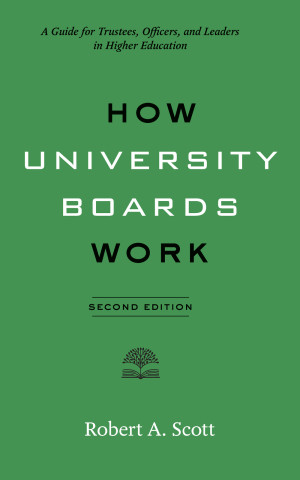
Reviews
Brown and Hayford make the case that able, committed, knowledgeable boards of trustees are essential to the effective functioning of academic institutions. A very useful study that should be put in the hands of many of the people who will become either presidents or members of boards of small liberal arts colleges.
This reader-friendly, jargon-free, anecdote-rich account should prove especially useful to current and potential board members who wish to be well-prepared to serve the institutions they care about.
The role of trustees is often misunderstood not only by faculty, staff, and students but by presidents and board members as well. This landmark book makes a compelling case that trustees can, and must, play a critical role in making their colleges thrive. Replete with provocative examples, Brown and Hayford's book is a very practical guide to assuring that the value of the board's contribution to institutional leadership can be realized.
Brown and Hayford present an illuminating and accessible examination of an understudied topic: the responsibilities of trustees in small liberal arts colleges. Their wisely selected case examples provide critical insights about challenges facing college and university trustees across institutional types. This book should be widely consulted as a resource for trustee education, assessment, and recruitment.
Book Details
Acknowledgments
Frequently Used Acronyms
Introduction
Chapter One. Characteristics of Boards
Chapter Two: Selecting Trustees
Chapter Three: Training and Supporting Trustees
Chapter Four: Basic
Acknowledgments
Frequently Used Acronyms
Introduction
Chapter One. Characteristics of Boards
Chapter Two: Selecting Trustees
Chapter Three: Training and Supporting Trustees
Chapter Four: Basic Responsibilities of Trustees
Chapter Five: Hiring and Supporting the President
Chapter Six: Evaluating and Possibly Terminating the President
Chapter Seven: Building Institutional Stability
Chapter Eight: Being Responsible to Those Outside the Boardroom
Chapter Nine: A Critical Element in Making a Small College Great
Conclusion: Steps to the Future
Notes
References
Index







